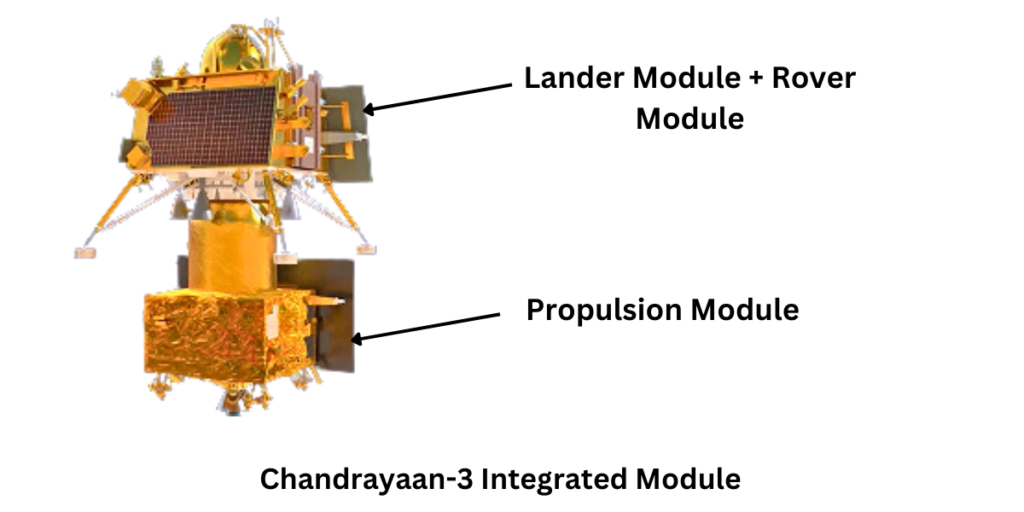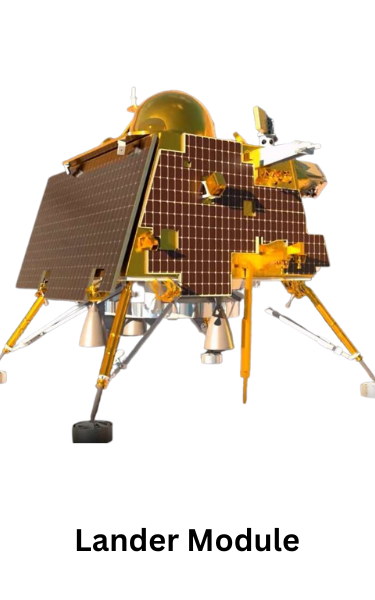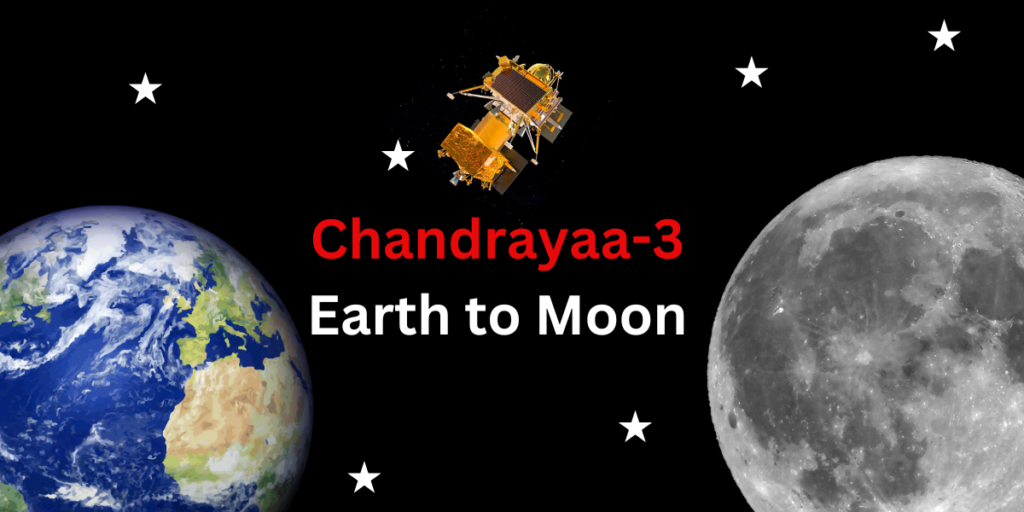Table of Contents
Introduction
ISRO stands for Indian Space Research Organization. ISRO is one of the top space agencies in the world. In the success of space exploration, ISRO gave a remarkable contribution. ISRO is famous for low budget projects. Where other space agencies spent millions of dollars in space missions, ISRO has done in past with lowest budget. From so many years ISRO is making India proud in space war. ISRO has achieved phenomenal achievements in space exploration. Launching 104 satellites, Mars Orbital Mission, Chandrayan, Aryabhata, Vikas Engine are the diamond achievements of ISRO in past years. In this Success journey of space ISRO announced another mission called Chandrayaan-3. Let’s deep dive into this and watch the journey of Chandrayaan-3 from earth to moon surface.
ISRO Chandrayaan-2 Mission
Before we start exploring Chandrayaan-3, we should know about Chnadrayaan-2. So, Chandrayaan-2 was the lunar exploration mission performed in 2019 by ISRO. The main objective of this mission was to demonstrate moon orbit insertion and soft-landing technology. Additionally perform science experiments and study Moon surface geology, compositions and exospheric measurements of moon. All experiments were supposed to be performed by Vikram lander. Chandrayaan-2 was successfully launched on 22 July 2019 from second launch pad, Satish Dhavan Space Center, Shrihari Kota. The Lauch was performed by GSLV Mklll-M1 rocket. Vikram lander successfully entered in moon orbit. But during the landing due to some software glitch the lander crashed on moon surface.
Why is ISRO conducting Chadrayaan-3?
Chandrayaan-3 is the follow up mission of Chandrayaan-2. Chandrayaan-3 is going to land on south pole of lunar surface. This area is the least explored area on the moon. There are some chances of having water in ice form and more geological and thermal information for the future missions on moon.
There are three objectives for this mission. First is to demonstrate soft landing on lunar surface. Second is roving a rover on lunar surface and the last is perform some scientific experiments. For this mission Chandrayaan-3 has 6 scientific instruments for conducting and performing experiments on moon. Chandrayaan-3 has three modules. One is Propulsion module, second is lander module and third is rover module. Scientific payloads are fixed on these three modules. Where lander module is also known as Vikram lander and rover module known as Pragyan rover.
ISRO Chandrayaan-3 spacecraft
Chandrayaan-3 is separated in three parts. Propulsion Module (PM), Lander Module (LM) and Rover Module (RM). The main job of PM is to carry LM and RM from launch vehicle injection to till 100km (about 62.14 mi) from moon. Then separate LM from PM. These modules are carrying a scientific payload for experiments. The Lander can make soft land at a specified lunar site and deploy the Rover which will carry out in-situ chemical analysis of the lunar surface. To perform different experiments and demonstrate the new technology this Chandrayaan-3 is having scientific instruments like Altimeters, Velocimeters, Inertial Measurement, Propulsion System, Navigation, Guidance & Control (NGC), Hazard Detection and Avoidance and Landing Leg Mechanism. Let’s explore more about these modules.

Propulsion Module (PM) in Chandrayaan-3
The propulsion module is made for two jobs. First is after a launch, PM will get separate in the space from launching vehicle with LM and RM. Then PM will carry LM, RM from launching vehicle injection orbit to 100km (about 62.14 mi) lunar orbit. Additionally, PM also has one scientific payload called SHAP. SHAP stands for Spectro-polarimetry of Habitable Planetary Earth. This payload will study the spectral and polymetric measurements of Earth from the moon orbit. PM will continue this study for the next 3 to 6 months. The weight of PM is 2145.01kgs (about 4728.93 lb) and required power for work is around 738W.
Lander module (LM) in Chandrayaan-3
Lander module is designed for soft landing on moon surface. This module also carries a Rover module. Lander modules get separate from propulsion modules from 100km (about 62.14 mi) moon orbit. Lander module weight is 1749.86kg (about 3857.78 lb.) and uses 738W power. Lander module has 3 scientific payloads for experiments. First is RAMBHA-LP which is a probe called Langmuir Probe. This payload measures the near surface plasma (ions and electrons) density and its changes with time. Second is ChaSTE which stands for Chandra’s Surface Thermophysical Experiment. This payload carries out the measurements of thermal properties of lunar surface near polar regions.

And the third is ILSA which is an Instrument for Lunar Seismic Activity. This instrument measures seismicity around the landing site and delineates the structure of the lunar crust and mantle. Apart from this, lander is also loaded of sensors such as Laser Inertial Referencing and Accelerometer Package (LIRAP), Ka-Band Altimeter (KaRA), Lander Position Detection Camera (LPDC), LHDAC (Lander Hazard Detection & Avoidance Camera), Laser Altimeter (LASA), Laser Doppler Velocimeter (LDV), Lander Horizontal Velocity Camera (LHVC), Micro Star sensor, Inclinometer & Touchdown sensors. This rover is solar powered, and the mission life of rover is 1 lunar days (14 earth days).
Rover module (RM) in Chandrayaan-3
Rover module stays in lander module. After a successful and safe landing on moon surface, rover module comes out from lander module. Rove module has two payloads for scientific experiments. First is LASER Induced Breakdown Spectroscope (LIBS) for Qualitative and quantitative elemental analysis & to derive the chemical Composition and infer mineralogical composition to further our understanding of Lunar-surface. And second is Alpha Particle X-ray Spectrometer (APXS) for determining the elemental composition (Mg, Al, Si, K, Ca, Ti, Fe) of Lunar soil and rocks around the lunar landing site. This rover weighs 26kg and takes 50W of power. This rover can communicate with only lander module.

Launching vehicle for Chandrayan-3.
The launching rocket for chandrayaan-3 is LVM3-M4. LVM3 is a heavy lift vehicle from ISRO. It has a spectacular pedigree of completing 6 consecutive successful missions. This is the 4th flight of LVM3, and it is responsible to launch chandrayaan-3 spacecraft GTO (Geo Transfer Orbit). LVM3 has proved its capabilities by conducting a complex mission like Injecting multi-satellites, Mission planning to ensure safe relative distance among separated satellites through re-orientation and velocity addition maneuvers, Multi orbit (LEO, MEO, GEO) and execute interplanetary missions, India’s largest and heaviest launch vehicle ferrying Indian and international customer satellites.
Full journey of ISRO Chandrayaan-3: launch to land.
Chandrayaan-3 spacecraft reached in south pole on moon. The exact landing location is 69.36762S, 32.348126E. Let’s check out the full journey of chandrayaan-3.
- Chandrayaan-3 was launched on 14 July 2023 from Satish Dhavan Space Center, SHAR, Shrihari Kota by LVM3-M4 rocket. LVM3-M4 successfully launched chandrayaan-3 into orbit. Chandrayaan-3 began its journey to moon.
- Spacecraft was inserted into trans lunar orbit on 1 august 2023.
- Chandrayaan-3 was successfully into the lunar orbit on 5 august 2023.
- Lunar module was separated from propulsion module on 17 august 2023.
- Chandrayaan-3 successfully landed on moon surface.
Conclusion
With the success of Chandrayaan-3, India became the first country to land on south pole of the moon and fourth country to land on moon surface. This mission will provide important information about the south pole of the moon. This is just the beginning of ISRO. Still there are more missions coming from ISRO. ISRO will conduct more space missions and will get success and make all Indias proud. Personally, as an Indian I wish all the best to ISRO for future mission and congrats to ISRO and all Indians.
Proud to be Indian.
Read more Articles


Pingback: Mission Aditya L1: ISRO's Extraordinary solar Mission - Aralop
veering xyandanxvurulmus.rEA7zXDLfTas
Discover the Triumph of ISRO’s Chandrayaan-3 Moon Landing Mission with Full Details. – Aralop
dqbxbnxrj http://www.g1ixq9l4240s48b19jyww6mx6zm3n147s.org/
[url=http://www.g1ixq9l4240s48b19jyww6mx6zm3n147s.org/]udqbxbnxrj[/url]
adqbxbnxrj
cialis professional prix
Your passion for your subject matter shines through in every post. It’s clear that you genuinely care about sharing knowledge and making a positive impact on your readers. Kudos to you!
obviously like your website but you need to test the spelling on quite a few of your posts Several of them are rife with spelling problems and I to find it very troublesome to inform the reality on the other hand Ill certainly come back again
Your blog is a constant source of inspiration for me. Your passion for your subject matter shines through in every post, and it’s clear that you genuinely care about making a positive impact on your readers.
Thank you for the good writeup It in fact was a amusement account it Look advanced to far added agreeable from you However how could we communicate
dental insuranceI think that you could do with some pics to drive the message home a little bit,
insurance adjuster jobsI think that you could do with some pics to drive the message home a little bit,
you are in reality a just right webmaster The site loading velocity is incredible It seems that you are doing any unique trick In addition The contents are masterwork you have performed a wonderful task on this topic
Attractive section of content I just stumbled upon your blog and in accession capital to assert that I get actually enjoyed account your blog posts Anyway I will be subscribing to your augment and even I achievement you access consistently fast
Just wish to say your article is as surprising The clearness in your post is just cool and i could assume youre an expert on this subject Fine with your permission allow me to grab your RSS feed to keep updated with forthcoming post Thanks a million and please keep up the enjoyable work
I have been surfing online more than 3 hours today yet I never found any interesting article like yours It is pretty worth enough for me In my opinion if all web owners and bloggers made good content as you did the web will be much more useful than ever before
I loved as much as youll receive carried out right here The sketch is attractive your authored material stylish nonetheless you command get bought an nervousness over that you wish be delivering the following unwell unquestionably come more formerly again as exactly the same nearly a lot often inside case you shield this hike
Belo blog aqui Além disso, seu site carrega rápido Qual host você está usando Posso obter seu link de afiliado para seu host? Desejo que meu site carregue tão rápido quanto o seu haha
O que eu não entendi é que, na verdade, você não é muito mais inteligente do que seria agora. Você é muito inteligente. Você sabe muito sobre esse assunto e me fez acreditar nisso de vários ângulos diferentes. É como se mulheres e homens fossem não estou interessado, exceto que é uma coisa a realizar com Woman gaga Suas próprias coisas são excelentes Sempre cuide disso